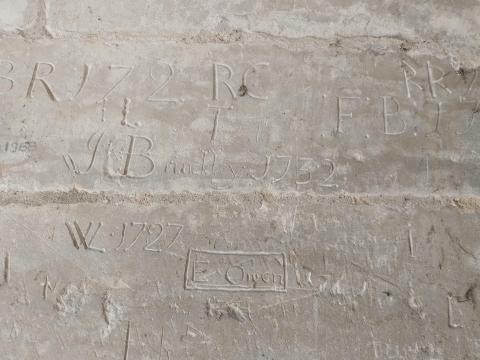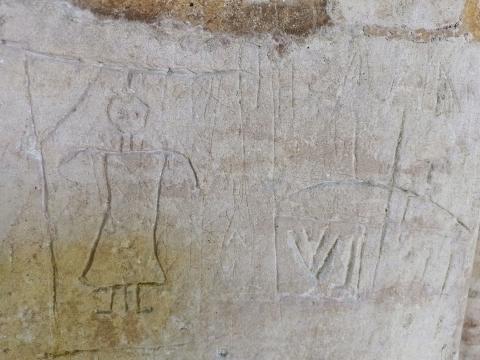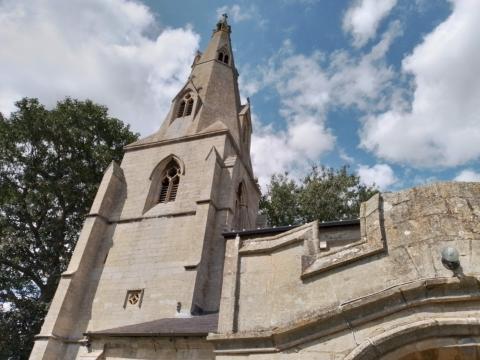Graffiti of Folkingham

I always enjoy searching for old graffiti in old parish churches. Modern graffiti is the preserve of the witless and morally retarded; old graffiti is a faint echo from the past, a murmuring of the common man, whose hand never wrote the history books or whose name was seldom preserved in wills or on monuments. And yes, I know that having different attitudes to graffiti ancient and modern is entirely hypocritical.

At Folkingham, Lincolnshire, a number of interesting example survive. Dated examples generally begin in the middle-third of the seventeenth century. The example above I regard with suspicion; the '4' seems not of that period, and the incision is too neat and unworn. Eighteenth-century examples employ the sophisticated, copperplate writing style which began at that time and endured until the mid-twentieth century. It is hard to recreate in stone by means of a penknife, but the ‘J’s above and below are not bad.


But what is this? Not a set of initials, no year helpfully slotting the work into a national chronology. It seems to show a human being swinging on a gallows. Might we say it is from the 1200s judging by the shapeless clothing then fashionable? Or is the subject wearing a poorer woman’s dress, common to every period? Is this a protest against an unjust conviction or a knee-jerk sentence imposed by a thoughtless judge? Is it a plea that an offender gets their just desserts? I hope it was just a child's game of hangman, the loser failing to deduce his opponent's word. Or, worst of all, is it the artist’s own aspiration, life’s problems simply proving too heavy to bear. It might really be an awful cry of pain, a picture of despair. Ephesians chapter two states:

Do not end your life. Jesus Christ is worth living for, and He thought you worth dying for.
- Log in to post comments


 Sunday Worship 10.45am & 6.00pm
Sunday Worship 10.45am & 6.00pm